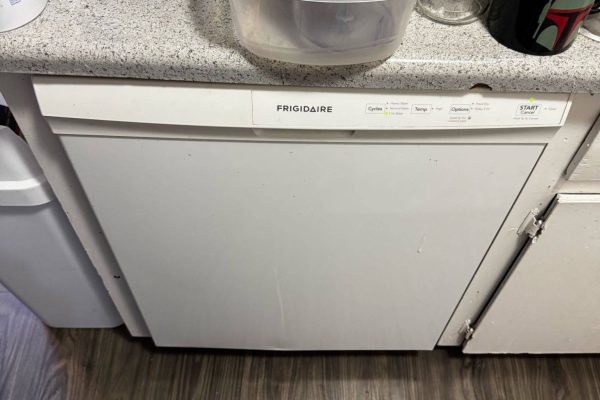A dishwasher is a convenient and time-saving appliance that simplifies the chore of washing dishes. To ensure consistently sparkling and spotless results, it’s essential to maintain proper salt and rinse aid levels in your dishwasher. These two additives play crucial roles in the dishwashing process, helping to soften water, prevent limescale buildup, and ensure thorough rinsing for streak-free dishes. In this article, we’ll discuss the importance of salt and rinse aid in dishwasher maintenance, how to check and refill these additives, and practical tips for achieving optimal dishwasher performance.
Understanding the Role of Salt and Rinse Aid
Salt:
Dishwasher salt, also known as water softener salt, is essential for households with hard water. Hard water contains high levels of minerals, such as calcium and magnesium, which can lead to limescale buildup on dishes, glassware, and the interior of the dishwasher. Dishwasher salt works by regenerating the ion exchange resin in the water softener unit, replacing calcium and magnesium ions with sodium ions, thus preventing limescale buildup and ensuring effective cleaning.
Rinse Aid:
Rinse aid is a surfactant agent added to the dishwasher’s rinse cycle to reduce water droplet formation and promote faster drying. It helps prevent water spots, streaks, and film on dishes and glassware by allowing water to sheet off evenly, resulting in sparkling clean and spot-free results. Rinse aid also aids in the removal of detergent residues, ensuring thorough rinsing and improved drying performance.
Importance of Maintaining Proper Levels
Prevents Limescale Buildup: Regularly replenishing dishwasher salt helps maintain the effectiveness of the water softener unit, preventing limescale buildup on dishes, glassware, and the dishwasher interior. Limescale deposits can impair dishwasher performance and lead to costly repairs over time.
Ensures Spotless Dishes: Adequate rinse aid levels promote thorough rinsing and faster drying, resulting in spotless dishes, glassware, and utensils. By reducing water droplet formation and promoting water sheeting, rinse aid helps prevent water spots and streaks for pristine results.
Improves Dishwasher Performance: Proper salt and rinse aid levels optimize the performance and efficiency of your dishwasher, ensuring consistent cleaning and drying performance cycle after cycle. This helps prolong the lifespan of the appliance and minimizes the risk of malfunctions or breakdowns.
Checking and Refilling Salt and Rinse Aid
Salt:
– Locate the salt reservoir in your dishwasher. It is typically located at the bottom of the dishwasher near the filter or in a compartment on the door.
– Remove the cap or lid of the salt reservoir and check the salt level. If the salt level is low or empty, it’s time to refill.
– Use dishwasher salt specifically designed for use in dishwashers, as table salt or other types of salt may contain additives that can damage the dishwasher.
– Carefully pour dishwasher salt into the reservoir until it is full. Avoid overfilling or spilling salt into the dishwasher’s interior.
– Replace the cap or lid securely to prevent moisture or debris from entering the reservoir.
Rinse Aid:
– Locate the rinse aid dispenser in your dishwasher. It is typically located next to the detergent dispenser or in a designated compartment on the dishwasher door.
– Open the rinse aid dispenser and check the level of rinse aid remaining. If the rinse aid level is low or empty, it’s time to refill.
– Use a rinse aid specifically formulated for dishwashers, as other types of rinse aids may not be compatible or effective.
– Carefully pour rinse aid into the dispenser until the indicator reaches the “full” or “max” line. Avoid overfilling to prevent spills or leaks.
– Close the rinse aid dispenser securely to prevent spillage and ensure proper dispensing during the wash cycle.
Practical Tips for Maintaining Optimal Levels
Monitor Usage: Keep track of how often you run your dishwasher and adjust salt and rinse aid refill intervals accordingly. Household size, frequency of use, and water hardness levels can impact consumption rates.
Regular Inspections: Periodically check salt and rinse aid levels to ensure they are adequately replenished. Make it a part of your routine dishwasher maintenance schedule to prevent running out unexpectedly.
Use Quality Products: Invest in high-quality dishwasher salt and rinse aid products recommended by the dishwasher manufacturer for optimal performance and compatibility.
Follow Manufacturer Guidelines: Consult the dishwasher’s user manual for specific instructions on salt and rinse aid usage, recommended products, and maintenance procedures.
Address Water Hardness: If you live in an area with hard water, consider installing a water softener system for your home to reduce limescale buildup and prolong the effectiveness of dishwasher salt.
Maintaining proper salt and rinse aid levels in your dishwasher is essential for achieving consistently clean, spotless, and dry dishes with every wash cycle. By understanding the roles of salt and rinse aid in dishwasher maintenance, regularly checking and refilling these additives, and following practical tips for optimal usage, you can prolong the lifespan of your dishwasher, minimize limescale buildup, and ensure sparkling results for years to come. Incorporate these maintenance practices into your routine dishwasher care regimen to enjoy efficient and effective dishwashing performance cycle after cycle.
Access our appliance repair experts today! Reach out to a skilled technician from Poway Appliance Repair Service Center via phone or schedule your service online.
Our service center operates 24/7, allowing you to effortlessly arrange a suitable repair time. The specialist will arrive promptly, conduct a diagnosis, and if needed, provide on-site repairs within 1-2 hours, if you prefer. Experience top-notch service at a budget-friendly price!
Contact us:


